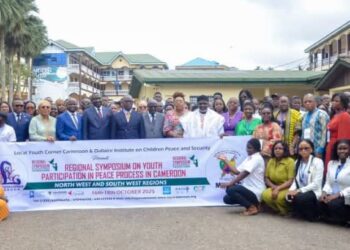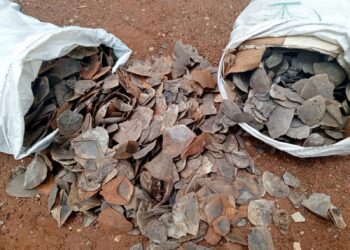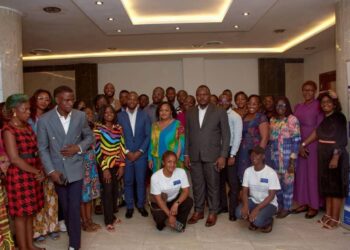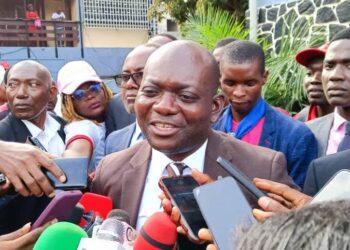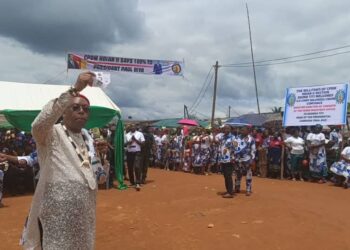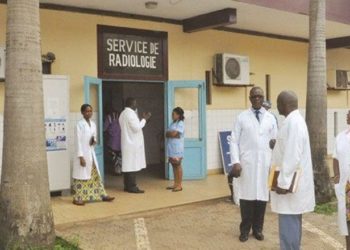The construction of this important infrastructure in 2012 and the creation in 2010 of the Deng Deng National Park had a considerable impact on the lives of the neighboring populations.
Faroukou Kombo, a farmer in Képéré Deng Deng township, a village surrounding the Lom Pangar hydroelectric dam, says the concerns and disappointments of the population at the difficulties they experience in obtaining fish supplies are alarming.
He said EDC had given them hope by promising them that after the dam is flooded, they will have serious fish, and at a low price. But when they leave for the landing stage, the fishermen hardly look at them.
Since the inception in 2012 of the dam and the resulting 540 square kilometer reservoir, access to fish has become a real struggle for local consumers.
They are used to fishing in rivers, but their technique is not suitable for the deeper areas that they also consider the sea.
“The small streams where women often fished during the dry season, everything is swallowed up by the lake over there in Ouami; It’s already like the sea we don’t know how to fish in the sea. “laments Jacqueline Assounga, owner of a restaurant in Deng Deng.
Fishing activity in Lake Lom Pangar is mainly carried out by fishermen from northern Cameroon: the Massa, the Mousgoum, and the Kotoko; they are more experienced in fishing techniques in reservoirs. To these groups we must add foreigners: Chadians, Malians and Nigerians, they all live in fishing camps that surround the lake. According to our investigations these fishermen are at the services of financial barons installed in the big cities of the country.
They are the ones who control the entire production chain. They buy canoes, motors, nets and many other equipment which they make available to fishermen, and it is to them that all the fish caught in the lake are primarily destined.
As a result, the prices at the Ouami wharf are beyond the reach of the local population, moreover, they must pay for the services of a direct seller to have access to the product.
“This lake is conditioned,” says Dieudonné Mekoudou, 2nd notable in the village, “when you arrive at the shore, only wholesalers are served; we who come for home consumption, no one takes care of us. Sometimes we get annoyed. ”Continues the notable.
A situation which further plunges the inhabitants of Képéré Deng Deng into poverty. “Look how empty the village is, even the little girls who managed to sell fish by the roadside are discouraged, today when you come here to Deng Deng hunger will kill you. There is misery here; and yet it was this activity that enabled these little girls to send their children to school. You buy three small fish at 1100f it is to have what profit, we suffer!” Jacqueline Assounga says angrily.
Like fish, the meat that enriched the diet of populations with animal protein no longer exists. With the creation of Deng Deng National Park in 2010, hunting is now prohibited; all those who made it their daily living are also unemployed; the latter are now struggling to pay for their children’s education.
“Even School Directors are complaining that so far the parents have not yet paid for the children’s school fees, why because they were all fishermen and hunters” underlines Jacqueline Assounga before continuing “we applauded when we were told the creation of the Park. Now the Park has come to kill us! we have no meat. The people here are carnivores, we only eat meat; we don’t eat vegetables”
OVER 6 MILLION TONNES OF CO2 EMITTED
In addition to social problems, there is the environmental impact. The area of influence of the Lom Pangar hydroelectric dam project has experienced a sharp increase in average temperature since 2012. According to Cameroon’s forest atlas, more than 6 million tonnes of carbon dioxide (CO2), of which around 3 million are due to deforestation, were emitted in the area between 2010 and 2018.
This atmospheric intrusion has undoubtedly played a major role in the rise in average temperatures and in the irregularity of the rainy seasons. According to the population, the rains have been earlier since the dam was put in water in 2016 and the heat is increasingly strong.
“This disrupts the agricultural calendar throughout the basin of the dam” tells us Cyrille Ngodja, a young farmer from the village of Képéré Deng Deng.

